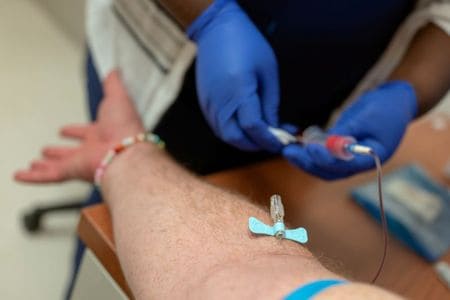After allogeneic hematopoietic cell transplantation (HCT), older individuals with acute myeloid leukemia (AML) have a significant recurrence risk and poor survival. Younger patients may have myeloablative conditioning to lower the likelihood of recurrence due to high-risk genetics or measurable residual disease (MRD), whereas elderly patients often receive reduced-intensity conditioning (RIC) to limit toxicity.
Researchers performed targeted mutational analysis (variant allele fraction≥2%) on diagnostic samples from 295 patients with AML aged 60 years who underwent HCT in first complete remission, 91% of whom received RIC, and targeted duplex sequencing at remission in a subset of 192 patients to identify factors that drive HCT outcomes in older patients. They categorized individuals with low (3-year LFS, 85%), moderate (55%), high (35%), and very high (7%) risk in a multivariable model for leukemia-free survival (LFS) that included baseline genetic and clinical factors.
Before HCT, 79.7% of patients had persistent baseline mutations, with 18.3% having just DNMT3A or TET2 (DT) mutations and 61.4% having additional variants (MRD positive). MRD positive was related to greater relapse and lower LFS in the univariable analysis compared to DT and MRD-negative variants. However, MRD positive showed no independent influence on LFS in a multivariable model that controlled for baseline risk, most likely due to its considerable connection with diagnostic genetic features such as MDS-associated gene mutations, TP53 mutations, and high-risk karyotype.


